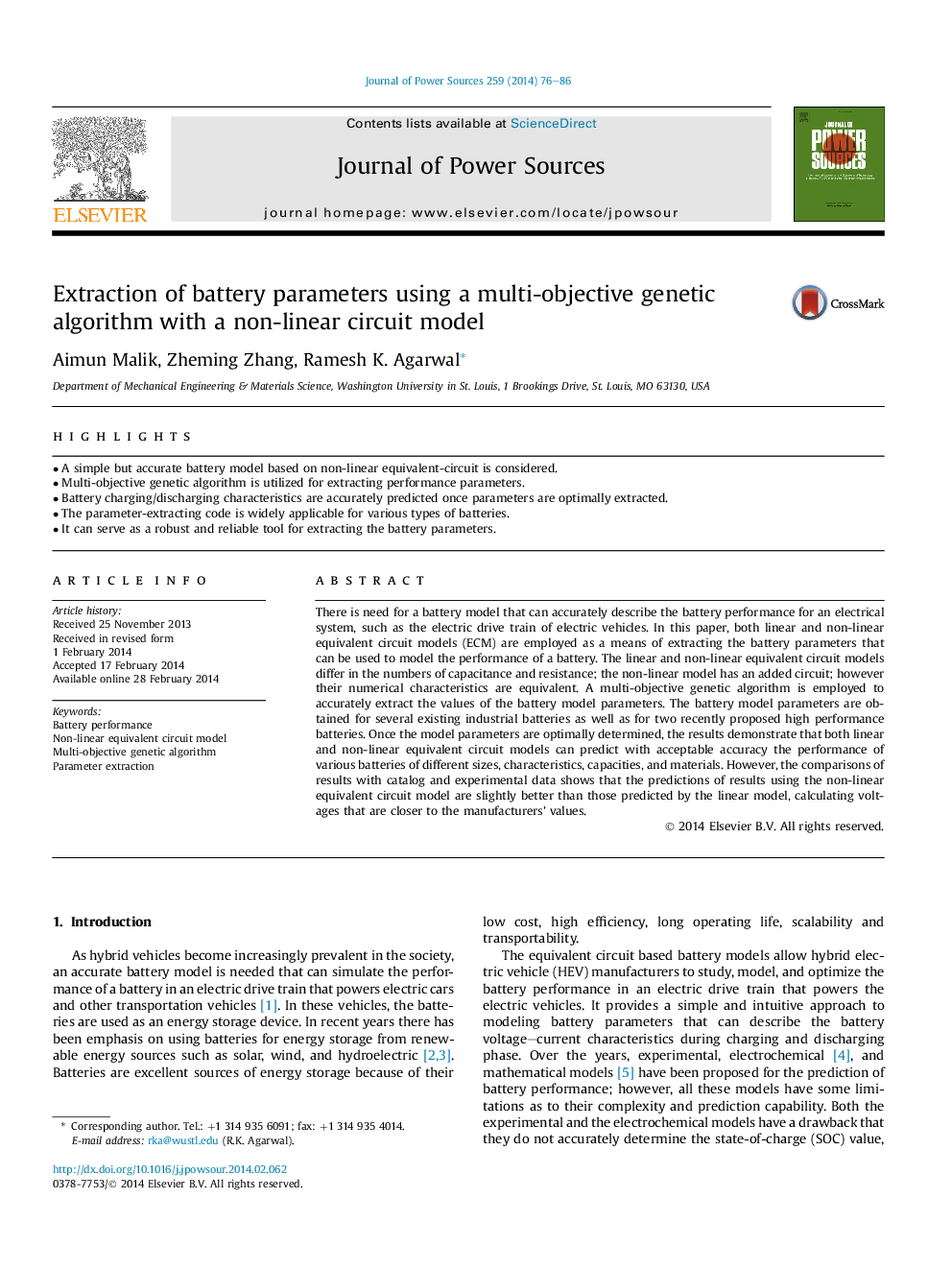| Article ID | Journal | Published Year | Pages | File Type |
|---|---|---|---|---|
| 1286872 | Journal of Power Sources | 2014 | 11 Pages |
•A simple but accurate battery model based on non-linear equivalent-circuit is considered.•Multi-objective genetic algorithm is utilized for extracting performance parameters.•Battery charging/discharging characteristics are accurately predicted once parameters are optimally extracted.•The parameter-extracting code is widely applicable for various types of batteries.•It can serve as a robust and reliable tool for extracting the battery parameters.
There is need for a battery model that can accurately describe the battery performance for an electrical system, such as the electric drive train of electric vehicles. In this paper, both linear and non-linear equivalent circuit models (ECM) are employed as a means of extracting the battery parameters that can be used to model the performance of a battery. The linear and non-linear equivalent circuit models differ in the numbers of capacitance and resistance; the non-linear model has an added circuit; however their numerical characteristics are equivalent. A multi-objective genetic algorithm is employed to accurately extract the values of the battery model parameters. The battery model parameters are obtained for several existing industrial batteries as well as for two recently proposed high performance batteries. Once the model parameters are optimally determined, the results demonstrate that both linear and non-linear equivalent circuit models can predict with acceptable accuracy the performance of various batteries of different sizes, characteristics, capacities, and materials. However, the comparisons of results with catalog and experimental data shows that the predictions of results using the non-linear equivalent circuit model are slightly better than those predicted by the linear model, calculating voltages that are closer to the manufacturers’ values.
